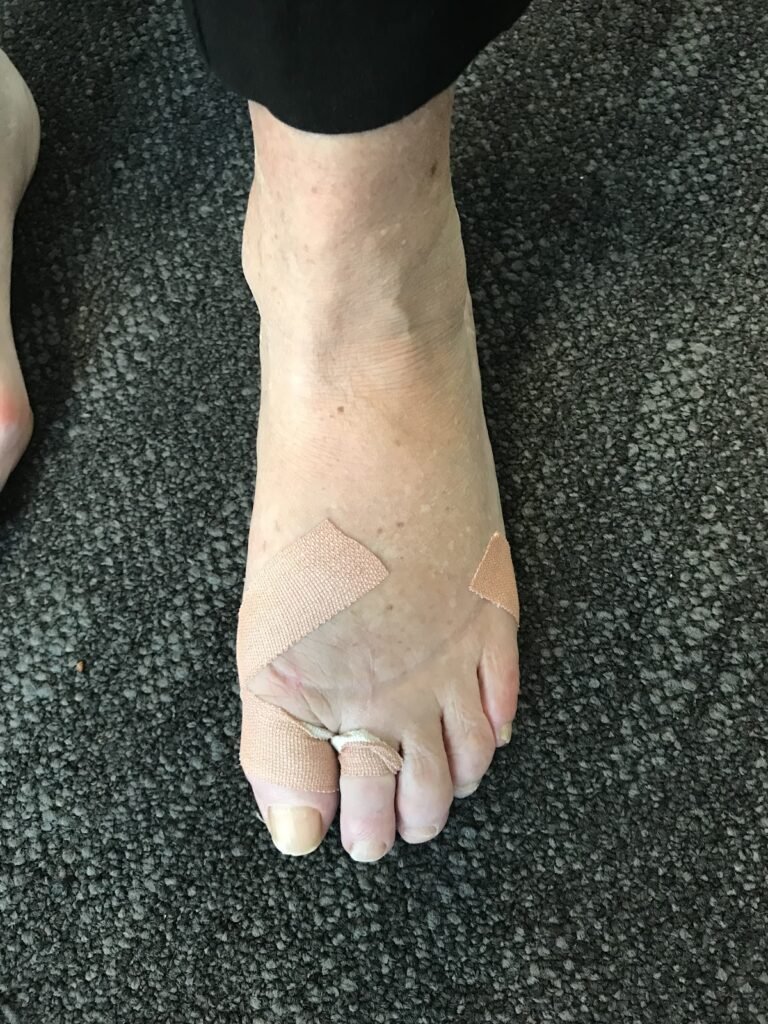
“If we are creating ourselves all the time, then it is never too late to begin creating the bodies we want instead of the ones we mistakenly assume we are stuck with.” – Deepak Chopra
Article Authors: Gordon Slater| Tandose Sambo
Bunions are caused by a misalignment in the feet, which cause a protrusion on the metatarsophalangeal joint. Usually surgical methods are used to remove this protrusion, and there is a six week post operational recovery period. The surgery is planned in detail by your surgeon, and once the procedure is completed, as a patient, you will either be taken to a recovery room for observation, or simply be allowed to return to your home.
Your orthopaedic surgeon will make a series of assessments depending on what type of anaesthetic was used in the surgery. The following parameters will also be monitored by your surgeon, just to ensure that everything is well:
- Foot Blood Circulation
- Pressure tests to ensure that the feet are feeling sensations
- Blood Pressure
- Pulse
- Breathing Rate
All being well, you will then be allowed to return to your home. Your orthopaedic surgeon will give you detailed instructions with respect to caring for your foot (or feet if you happen to have bunions on both feet). When you are discharged from the hospital, you are usually given special surgical shoes in order to protect your feet as you are mobile. Additionally, you may be given a walker or a cane, to support the body, and facilitate weight distribution that doesn’t stress the healing leg.
The most critical post operational activity is rest, rest and more rest! Orthopaedic surgeons advise that you keep your affected foot elevated. What this will facilitate is the healing process. Raising your feet facilitates circulation, and helps to reduce that post operational pain, and swelling that is associated with healing post surgery. Additional treatments include:
Icing the feet – compression is good for healing, especially if there is swelling associated with the post surgery experience.
As you can see from the image above, there is a dressing that is applied to the feet, post surgery. It is important to ensure that the feet stay clean and dry. Recommendations for maintenance include covering the foot with a plastic bag, and protecting the healing area from excessive moisture during activities such as showers.
Take a pain reliever for soreness as recommended by your healthcare provider. Aspirin or certain other pain medicines may increase the chance of bleeding. Be sure to take only recommended medicines. Your healthcare provider may also prescribe antibiotics to help prevent infection following your surgery.
Your orthopaedic surgeon will monitor your progress across the healing weeks. The initial healing will take place across the first six weeks, and full healing can be expected across four months. You will be given a checklist of adverse symptoms to look out for. Do not hesitate to call your orthopaedic surgeon if you notice anything out of the ordinary. Monitor yourself and your vital signs and ensure that you are in the normal to healthy ranges for all the critical parameters such as your blood pressure, as well as ensuring that you are feeling sensation in your legs are healing.
As part of your healing, you will be advised to take exercises either at home, or with a physical therapist, in order to ensure that appropriate mobility is restored to the region. Happy healing!
References:


